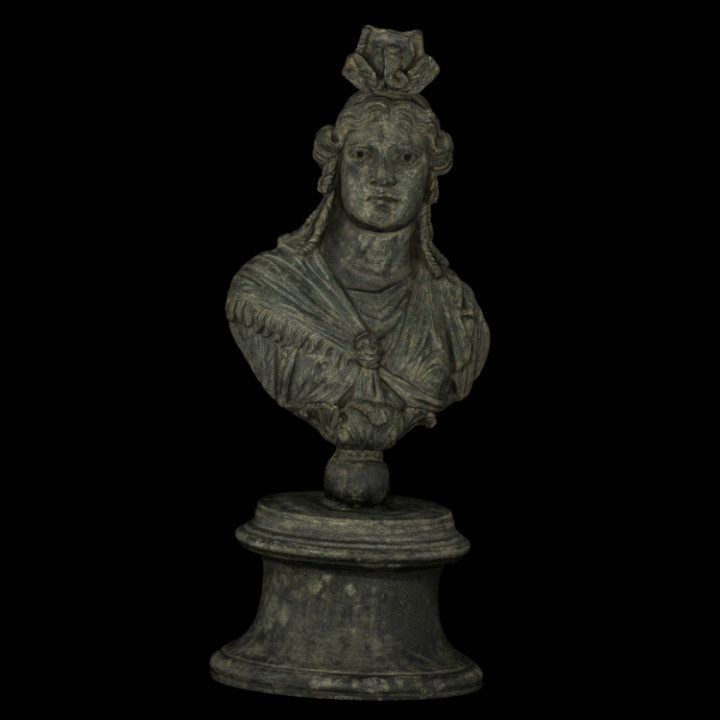
Bust of Isis
myminifactory
This bust of a woman emerges from three-leaf calyx set on a globe; Hellinic facial features define her visage; she wears an ancient Egyptian headdress consisting of serpent with globe flanked by two ears of corn; she is draped in a fringed shawl tied in a knot at her front; sausage-curl hairstyle frames her face; hollow pupils that might have been inlaid with dark stone or glass give her enigmatic gaze. The text on the label of the bust reveals: The cult of Isis rapidly spread throughout the Mediterranean basin during the Roman period initially among non-Romans, slaves, and women—those on society's margins—as an alternative to the more staid Roman state religion, from which these groups were largely excluded. The appeal of the cult of Isis, as well as other mystery religions, lay in direct communion with the deity, colorful and lively rituals, redemption, and personal immortality. This bronze bust of the Egyptian goddess Isis dates to the high Roman empire (ca. second century CE) when her cult's popularity reached its zenith. Here she wears a headdress featuring a serpent (uraeus), a traditional symbol of Egyptian royal power, and grain, a symbol of fertility and abundance. An important cult ritual in the Roman period involved launching a ship bearing her image in early spring to ensure safe and prosperous navigation. Initially outlawed in the early empire, Isis worship eventually became more accepted—Rome itself featured a temple of Isis—partly because it included prayers for the well-being of the emperor and senate, thus avoiding threats to Rome's political power structure. Purchase was made possible by the Nancy Everett Dwight Fund and the Psi Omega Society Fund in honor of Mary Gilmore Williams (Class of 1885). Digitized by Laura Weston, 2019 - lmweston@mtholyoke.edu
With this file you will be able to print Bust of Isis with your 3D printer. Click on the button and save the file on your computer to work, edit or customize your design. You can also find more 3D designs for printers on Bust of Isis.
